The framework of Silicon Studio and Square Enix’s Bravely Default was undoubtedly great, featuring a throwback turn-based RPG with modern twists to make it feel fresh when it launched just a couple of years ago. In fact, it was the first time in years where it felt like turn-based RPGs actually had something new and worthwhile to bring to the genre. However, after a first half that makes it seem like you’re experiencing a classic from the hay day of 90’s RPGs, a baffling design decision was made that resulted in the second half boiling down to little more than a monotonous repetition of a scenario you need to trudge through multiple times. This let the game down substantially, to the point where it was hard to imagine what Silicon Studio was trying to accomplish other than to unnecessarily pad out the game’s length.
Bravely Second does not make the same mistakes that the first game made, with the sequel being a consistently memorable experience that feels like a brave second attempt to make good on the promising foundation of the first game.
The game takes place two and a half years after the events of the first game, with that game’s heroine, Agnes Oblige, set to finally bring peace between Luxendarc’s warring Crystal Orthodoxy and the Duchy of Eternia. However, before the peace treaty can be signed, a mysterious masked man known as Kaiser Oblivion kidnaps Agnes and wipes out her companions. Among her companions was newcomer Yew Geneolgia, who serves as this game’s protagonist and now finds himself as part of a rescue team to save Agnes with a strange woman from the Moon named Magnolia and returning Bravely Default characters Edea Lee and Tiz Arrior.

The story that Bravely Second tells is a much more intricate one compared to the first game, as our protagonist Yew finds himself not only battling for the sake of Agnes’ safety, but he is also forced to question the beliefs he has fostered for years. Not everything is as it seems on the surface, and certain characters close to him who appear to be of noble intent aren’t as noble as they seem. Yew’s struggle to make heads or tails of everything is always endearing, as he has an innocent and pure-hearted attitude that is never shaken by the increasingly grim realities that the game presents. He works better as a leading character than Tiz or Agnes did in the first game, thanks to a more interesting personality and story arc.
Yew is a fantastic new protagonist, though Edea steals the show once again
The rest of the game’s cast doesn’t disappoint, either. Bravely Default’s Edea Lee continues to be a highlight thanks to her brash and badass personality that is the result of much of the game’s humor, and the other newcomer Magnolia Arch adds plenty of quirk to the formula, as well. Even though Tiz remains one of the more bland characters of the series, his story arc features a surprising twist that really pays off in the later parts of the game. The relationship between the characters are further fleshed out with party chats, which give you an optional but welcomed glimpse into the light-hearted banter between the characters you wouldn’t otherwise see. The voice acting is also top-notch, marking an improvement over the first game with a cast of main and side characters that all do a terrific job.
What makes the story and its characters come to life is its avoidance of taking itself too seriously, which many of its contemporaries often do. Bravely Second definitely has all of the narrative tendencies of the standard RPG, but it is also very self aware and never hesitates to poke fun at itself. This is often expressed in character names and titles, with one particular side character being named Gho Gettar and protagonist Magnolia Arch being an official Ba’al Buster. As mentioned previously, the main character’s name is Yew, which is just as much a source for jokes as it is fourth-wall breaking epiphanies within the story and our involvement in it as the player. This humor and awareness of RPG tropes is the undercurrent to the entire game’s golden heart, keeping it from getting too sugary or predictable despite all of its spotless charm and innocence.

The main appeal of what made Bravely Default shine was the twist that it brought to turn-based combat, which is the Brave and Default system. That system returns here as you save or use BP (Brave Points) that gives you the option to potentially attack four times in a row. You gain 1 BP per turn and each single action costs 1 BP, so it becomes a balancing act of deciding when to Brave and initiate a barrage of attacks on an enemy at the opportune moment or when to Default and simultaneously defend against incoming deadly attacks. It feels great to pummel enemies and come away with a quick victory, but if you fail to bring the enemies down during that process then you will be subject to four consecutive attacks that could spell your own doom.
This system adds a nice wrench into standard enemy and boss encounters, but it’s an absolute breath of fresh air when it comes to level grinding. Just as in any old-school RPG, you’ll have to level up your characters as you go along in the game to take on the increasingly-difficult enemies and the Brave and Default system facilitates that process. If you enter an area with enemies you know you can defeat in four turns, you can switch on auto-battle and have all your characters Brave 4 times to take 4 turns at once to wipe out the enemies quickly. This quick experience gain is further compounded by a new feature that Bravely Second adds that allows you to immediately take on another wave of enemies without healing or recovering BP for a multiplied experience gain, but only if you wipe enemies out in one turn. Level grinding continues to be a hate it or love it feature in RPGs, but no RPG has ever made the process more quick and enjoyable than this one.
While who your characters are within the confines of the narrative is pretty static, who they are in combat is a whole different beast. The game’s job system is back and better than ever, allowing each of your characters to choose between 30 different jobs that each feature different abilities and stats. These range from returning jobs like the magic-based Black Mages and the high-strength Knights to brand new and more unique jobs like the baked goods-wielding Patissier and the Catmancer that can learn the abilities of enemies that were used against it. These jobs offer so many different styles of play that just about anybody can find their perfect job and have fun with it.
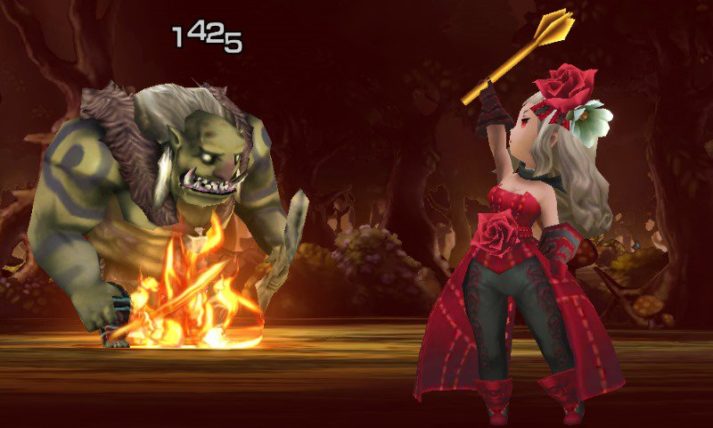
The amount of jobs and customization that the game allows is immense, as your characters are not only able to utilize the abilities from the job they are currently set as, but also the abilities from jobs they have leveled up in previously. This allows you to create hybrid characters that have access to abilities from a variety of different jobs and tailor each character to your liking. If you want to have a Summoner that also has the ability to heal your team you can do that, and if you want to have a Fencer that can also steal items from enemies you can do that, too. It’s really all up to your imagination which route you want to take any of the characters, as their base stats are similar enough in range that any character can succeed at any job without having to worry about min-maxing.
You’ll unlock many of these jobs just as you did in Bravely Default, which is by defeating bosses and acquiring their respective job asterisk either through the progression of the main story or through the many different side quests. However, Bravely Second makes a notable departure from how side quests play out compared to the first game, as many of them result in you having to choose sides within their self-contained narratives between two different job asterisk-bearing characters. This means that you are not only deciding the fate of how these side stories play out, but also the resulting new job you will be rewarded with when all is said and done.
This was a fantastic twist to the more linear side quest scenarios of the first game, as it forces you to stop and think about what the best course of action is. In my experience, the job that I wanted to acquire and the outcome of the situation that I wanted to see come to fruition were rarely ever lined up, which added genuine weight to each of these mini-scenarios as I debated back and forth on whether I wanted the better story outcome or the better job. They also tackle some surprisingly mature subjects, such as eminent domain, gender equality and tax rates that give the game’s world a lot more depth than what it initially lets on. However, the game does give you the option to acquire the jobs you decided against towards the end of the game, so you never have to worry about missing out on the jobs you skipped entirely.
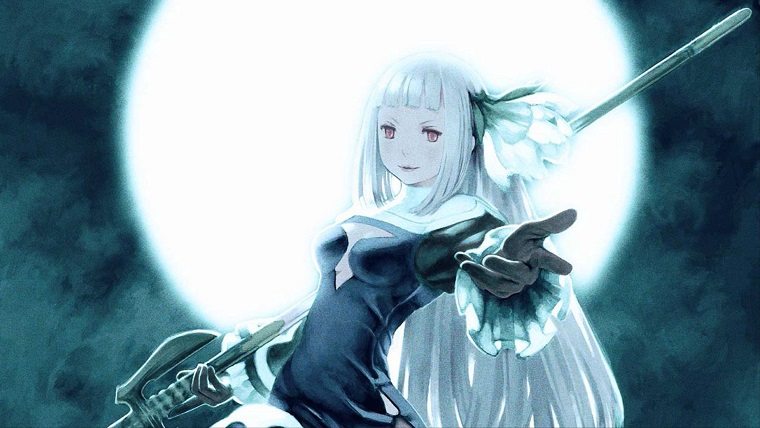
Despite the grand scope of the game that will easily last most over 60 hours of gameplay if they take the time to seek out all it has to offer, this series remains the most accessible RPG series on the market. You can still completely turn off random encounters when you just want to explore or double the encounter rate when you just want to level grind, as well as alter the game’s difficulty on the fly and save just about anywhere you want to. You can even double or quadruple the speed of battles to make getting through level grinding that much more of a breeze. While these ease of use features are more necessary for a portable gaming system where shorter play sessions are more common, they’re features that all other RPGs would be wise to adopt going forward as they improve the experience exponentially.
Future RPGs would be wise to adopt Bravely Second’s improvements to the genre
While it features many of the same areas and jobs that the first game does, Bravely Second switches up the order in which you come into contact with them. The jobs that you got right off the bat in Bravely Default won’t show up until later on in Bravely Second, which forces you to try out different jobs and get familiar with how they work rather than relying on what you already know. It resulted in me using characters in very different ways than I did in the first game, and when the older jobs eventually did pop up I wasn’t interested in switching back to them anymore.
However, it’s the occasional over-familiarity that does cause the game to drag at certain points. While there are many new areas to experience throughout the course of the adventure, you will also be revisiting many of the same areas found in the first game. The scenarios within these areas may be different, but it doesn’t stop them from feeling like dull retreads at times. Both games have dozens of hours of content, so if you’ve already spent a lot of playtime in certain areas in the first game it becomes very underwhelming and a little tedious when a lot of those same areas pop up again in the sequel.
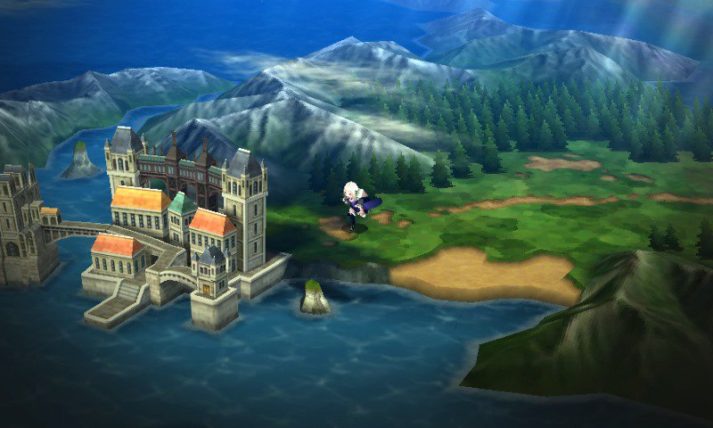
Just as in the first game, there are things to do in Bravely Second that progress outside of the main gameplay, though there is even more of it this time around. Rather than rebuilding Tiz’s hometown of Norende, you’re now rebuilding Magnolia’s lunar home called Fort-Lune. While rebuilding all of the various spots plays out similarly to the Norende mini-game, you now must also defend the village from incoming attacks from monsters called Ba’als. You can level up your ship and fire at the Ba’als to weaken them, and then take them on in standard turn-based combat for some of the toughest enemy encounters in the game. Silicon Studio also wisely allows you to acquire new villagers by also connecting with other players online rather than only through StreetPass like the first game, which gives you far more opportunities to increase the population of your village and its rebuilding speed and doesn’t leave out people who don’t take their 3DS’ out and about very much.
Connectivity with other players doesn’t stop within the confines of this village rebuilding side scenario, as the ability to summon attacks sent from other players in battle and even send out your own for use by others returns here. Abilink allows you to utilize abilities that your friends have learned before you have, giving you an extra boost when the cards aren’t in your favor. You also have the option to customize the phrase that your characters say after performing their summoned attack, which not only adds personality but also results in you witnessing the often hilarious and creative one-liners that other players come up with within the boundaries of what Nintendo’s text censoring system will allow.
The biggest new side attraction that Bravely Second brings to the table is called Chompcraft, which is an oddly addicting mini-game that has your four characters assembling different parts of little Chomp dolls and getting CP (Chompcraft Points) upon completion. You spend said points on better scissors, stuffing, glue and brushes, which enhance your production capabilities of the Chomps and results in more CP being acquired. There is a luck factor to it, as well, as there are various Chomp rarity levels that will net you more money depending on which ones you end up with and point multipliers being added if you meet various requirements. The mode serves as a sort of glorified sound test when you think about it, as you unlock all of the music from the game while playing it and it serves as background music for the mini-game. The game’s music is excellent, so it’s definitely worth sinking your teeth into.
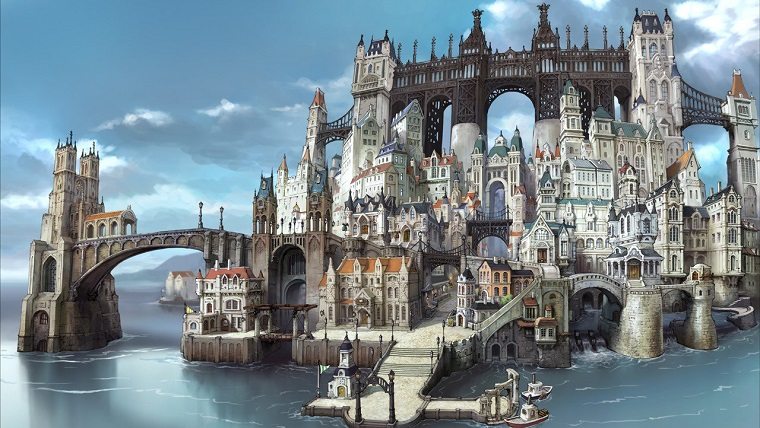
The world of the Bravely series continues to impress in this latest entry, with its hand-drawn visual style appearing vibrant and full of personality. While it runs off the same engine as the first game, there are more dynamic shots that result in more visually-striking conversations and encounters between characters. While dungeons retain their basic and maze-like layout, there are more memorable and more detailed environments to trek through this time that stop the multiple dungeons from feeling like nothing more than an obstacle between you and the inevitable boss fight. The aforementioned soundtrack goes perfectly with the game’s world, offering plenty of grand and epic orchestral pieces despite borrowing some tracks from the first game.
The Verdict
Bravely Second is exactly what a sequel should be, improving upon the foundation of the original while adding in its own ideas to further enhance the experience. The 60+ hour adventure is more consistent than the first game, and the main plot and side quests are more elaborate and engaging. Turn-based RPGs may not be the talk of the town as they once were, but Bravely Second stands near the top of the genre’s catalog and will hopefully be a wake up call to developers that turn-based RPGs still have plenty of life left in them.


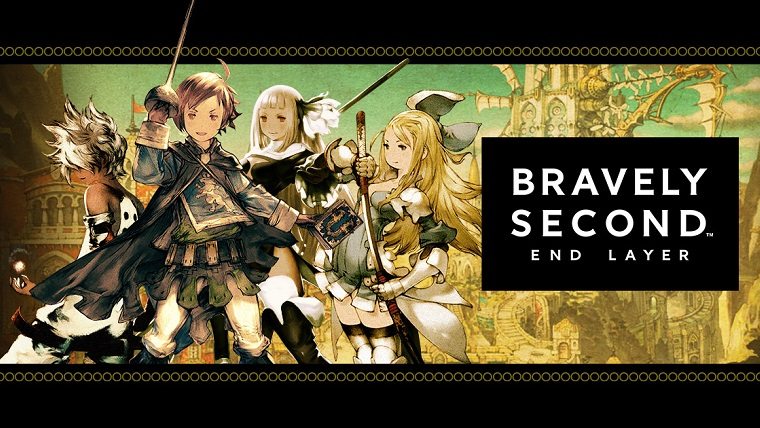








Published: Apr 13, 2016 10:00 am